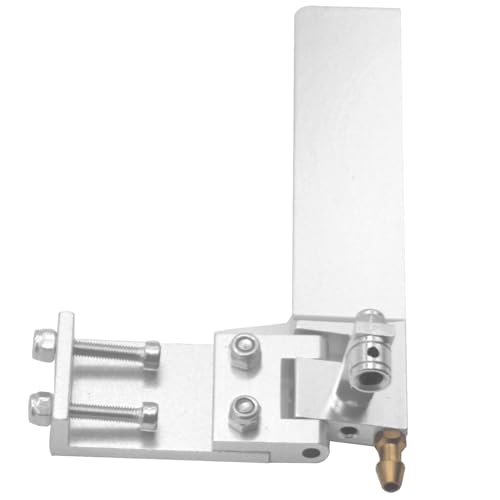Naviga has'nt decided on LiPo or LiFePO4 yet. There will be a decission at the worlds in Warsaw, Poland this summer. Germany (Nauticus) will propose LiPo rules as follows, other countries may propose different rules.
Hydro1/Mono1/Eco (7cell classes): LiPo, 2s1p, 280g max.
Hydro2/Mono2 (12cell classes): LiPo, 4s1p, 560g max.
Hydro3/Mono2 (20cell classes): LiPo, 6s1p, 840g max.
There will be test and demonstration classes at the german championship races in the 2s classes, but the championship 2008/2009 (and thus qualification for the 2010 worlds) will be run with NiMH's - unless the decission at the worlds 2008 is pro LiPo. Then whatever is decided there will be used in 2009 at the national level too.
See
http://forum.smbc-moers.de/attachment.php?attachmentid=664 for details, see 4. "Einsatz von LiPo".
This is the protocoll of the meeting of the technical commission of the german Nauticus.
Besides the 2 championship races/year there are quite some more cup races in 2008 in Germany.
1. Eco-IDC (that's what I organize with a friend for that last 10 years, 8-12 races/year, mainly Eco and limited classes) and
2. LiPo-Master (a new series for mono and hydro races, 5-8 races/year).
3. The swiss Eco cup decided to allow LiPo in 2008, too.
IDC and LiPo-Masters both decided to allow LiPo (and LiFePO4 cells in some classes) in parallel to 7/12 NiMH's in 2008. We will only have 2s1p and 4s1p classes. Weight and cell limits are similar to the proposal above (we did talk before we made the rules), but IDC and LiPo-Masters will allow 3s2p and 5s2p of A123, 2300mAh in some classes too. Runtimes are 5min for Hydro, 6min for Mono and Eco, 8min for Eco standard (05 motors).
Safty rules are like follows:
1. LiPo batteries need to be operated in a 4.23V-3.30V idle voltage window. Higher or lower voltages and you are out. Cell voltage will be checked if neccessary, from occasionally at friendly races to every boat at a final race. Window = 3,65V - 2,60V for A123. This is done to ensure long cycle life, to avoid puffed cells and to avoid overcharge - which would allow 10-20% more energy output at a highly reduced cycle life.
2. Racers MUST use balancers and LiPo capable chargers to charge Li cells. It is very recommended to use a single cell discharge supervision device (like Cellshield or LiPoDimatic) to guarantee cells are operated in the recommended voltage window. But it's up to the racers to watch for the window, however he does it.
3. It is recommended to transport LiPo cells in appropriate safty cases, like LiPoSack or other LiPo containers.
These rules will allow us to continue to race our existing NiMH boats and known race formats. Power will be slighty higher and total boat weight will be lower, thus speeds will slightly increase, but basically it's very simialar to what we did so far.
We will have a given amount of power and then you decide what size of boat you will run to get best performance and handling.
We have talked about a power limiter too, we saw the benefits of it (really equal power to everyone), but we don't believe we should rely on this none existing technology for 2008. Besided that, it will be quite difficult to achieve the accuracy we would like to see (<1% error) with a device in the 50-80 Euro range. But we watch the FAI closely.
We are able to have such rules, because our runtimes are rather high: 5-6min. Thus the C rates are only about 10. This does'nt harm the cells much and we are very safe with the 4.23V-3.30V window, safty and long cylce life.
A weight limit is a very strict limit on energy too. Looking at LiPo cell development in the last 2 years, we are still at 5000mAh for a 120g LiPo cell. The above rules will allow up to 130g/cell net weight, so I expect 5500-5600mAh this year for a 130g/cell. Higher C rate development won't affect us much as the existing cells, either 20C, 25C or 30C don't affect the voltage much at "only" 10C avg. discharge.
You may think these boats are slow at "only" 50A average, but they reach speed of up to 60mph for a 2s1p hydro and probably in the 70mph+ range for a 4s1p hydro. Mono and Eco boats are slower, but still pretty quick. We do probably run more sophisticated and more advanced designs and setups compared the "give me power" thinking - but this is the way how we like to do things in Europe.
BTW, we keep the existing cources, about 1/16 mile for oval and the 30m triangle for eco, because they just fit into most of the rather small lakes we got here.
Joerg
Sources:
Eco-IDC:
http://www.eco-idc.de/eco-news/regel-2008.html
LiPo-Masters:
http://rc-powerboats.homepage.t-online.de/10585.html
SEC-Swiss Eco Cup:
http://home.datacomm.ch/pmzwygart/bauvorschriften.htm


































